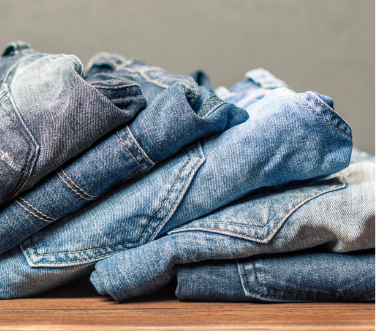10 Tips for Back-To-School
Sourcing in the Secondary market for B2S

According to the National Retail Federation (NRF), consumers are expected to spend more than $83 Billion on back-to-school and back-to-college essentials. This traditional buying time offers resellers a terrific opportunity to capture new customers and increase sales by sourcing the top-quality, name-brand merchandise students want the most.
These top 10 tips offer great ways for savvy business buyers to make sure they source the right inventory, at the right price, and are able to resell it for an amount that generates a profit.
KNOW WHAT WORKS FOR YOU: Source quality merchandise your customers will be looking for like clothing, electronics, shoes and school supplies. Start with categories you’re familiar with, like personally, or have already been successful for you. Know what items sell well and keep at it.
KNOW YOUR COMPETITION: Check out the competition and what they’re selling. Be realistic about buyer demand and don’t be afraid to get creative if everyone’s selling one particularly hot item. Consider selling the accessories instead or package a small accessory with the primary item – a nice freebie that can help set you apart from your competition and ultimately increase sales price.
LEARN FROM THE PAST: Check historical prices for each item, as well as bulk lots, then develop a purchasing strategy for sourcing. Think about how much you can resell each item for and benchmark price as you get started so you can adjust, as needed, to make sure you turn a profit.
UNDERSTAND WHAT YOU ARE PURCHASING: Online marketplaces are a terrific way to purchase items for your inventory. Before you buy, find out as much as you can about each product. Look for detailed descriptions, digital images, shipping dimensions, condition, technical information, etc. Also, search out the terms and conditions for each sale and make sure understand thoroughly.
SET YOUR PROFIT GOAL: Set your resale price for each item then estimate how much profit you’d like to make on each sale. Once you know this, you then can determine how much you are willing to pay for the inventory you source.
DETERMINE THE RIGHT QUANTITY: Purchase the right quantity for your needs. Larger lots typically have a lower cost per item, but you don’t want to purchase more that you can sell. So, when sourcing your inventory, look for a vendor that offers some flexibility in package size and SKU mix. This will get you as close as possible to purchasing the right quantity of product in the right categories.
AVOID IMPLUSE PURCHASES: Do you really need that “great deal?” Probably not if it doesn’t fit into your pre-defined product mix. Once you define your strategic plan, stick to it. Straying will cost you both time and money.
CALCULATE SHIPPING COSTS: Find ways to eliminate or reduce your shipping costs. When sourcing inventory, look for vendors with warehouses or distribution centers nearby and opt for onsite pickup. If that’s not an option, see if they provide discounts on regional shipping or have negotiated rates with major carriers. Always obtain an estimate before purchase and factor that into purchase price. The less you spend on shipping, the more you can spend on merchandise.
CREATE ADDITIONAL VALUE: When possible, look to create additional value for each item. A little extra cleaning, testing or refurbishment – especially for electronics and dorm room gadgets – can sometimes get you closer to retail value in secondary marketplaces like eBay.
SELECT THE RIGHT VENDOR: Look for a vendor that has ongoing relationships with top retailers and manufacturers. Ones that do will have a consistent flow of inventory that mirrors the U.S. retail supply chain. Check out the availability of email alerts, search tools, account information and transaction settlement. Robust functionality is key to making the sales process simple and easy.
You might also be interested in:
Save Money on Shipping
Consolidate Shipping at the Warehouse
A Buyer's Experience: Bidding Tips
When & How to Bid




